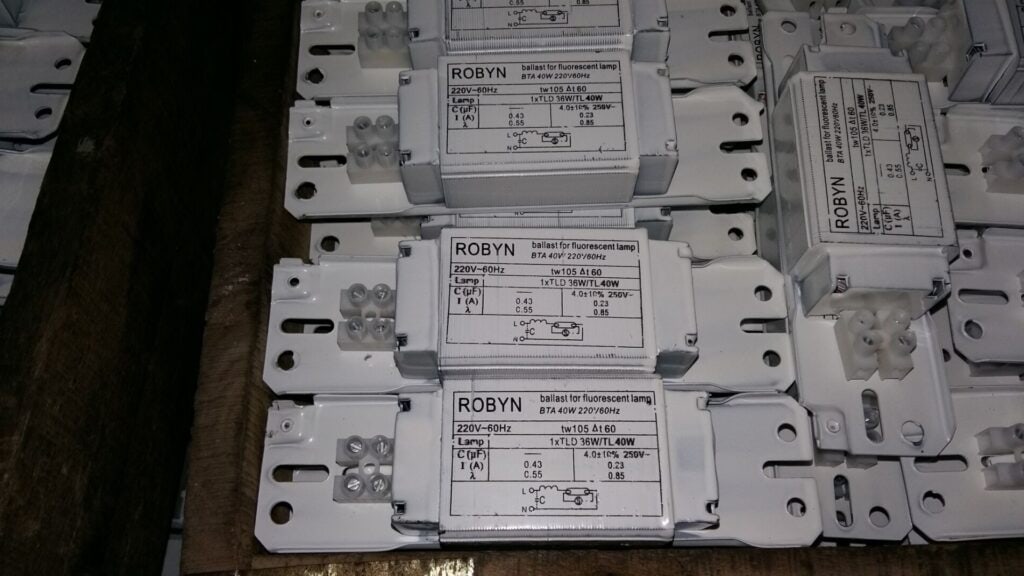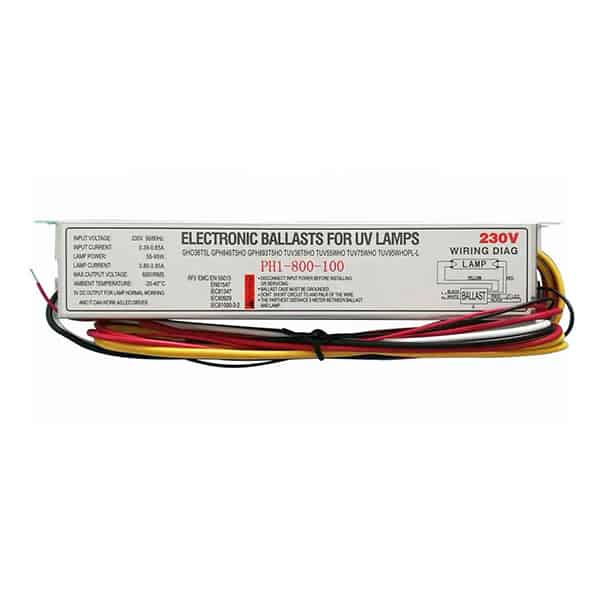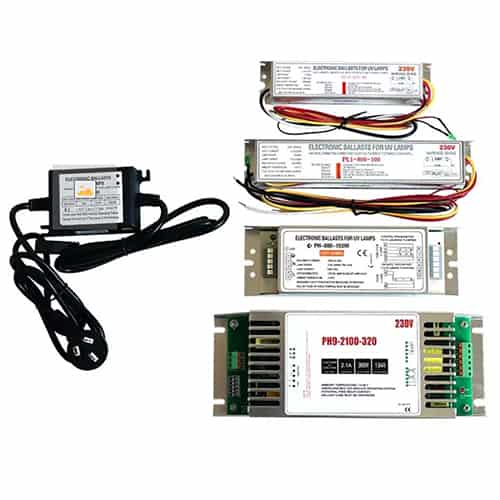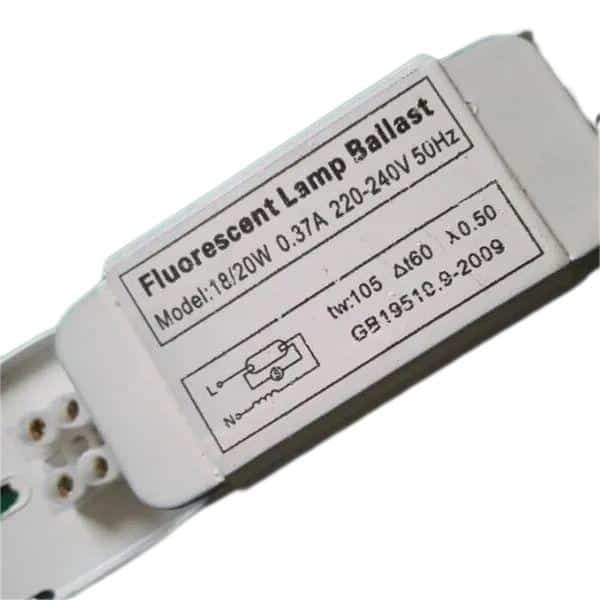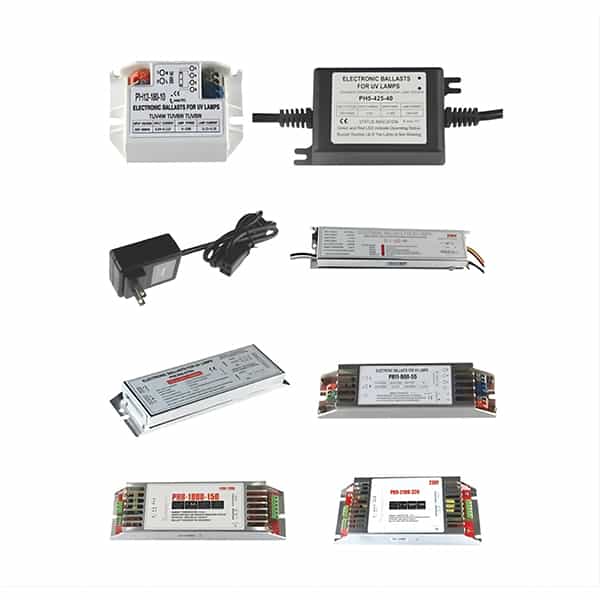You will often have lighting setups that require multiple tubes. You may have a hard time figuring out how to pair them with the right light ballast. If you don’t have a compatible configuration, you could have inefficiency, damage, or even an electrical hazard. You need to know how to match up ballasts with multiple fluorescent tubes.
Yes, you can use two fluorescent tubes with one ballast, if the ballast is rated for multiple lamps. Make sure the ballast’s specs match the wattage and type of fluorescent tubes you are using.
Knowing how to connect two tubes to a single ballast is critical to having an efficient and safe lighting setup, and saving money on your electric bill.
What Is a Fluorescent Ballast?
A fluorescent ballast is a critical component in fluorescent lighting systems. It regulates the electric current to fluorescent tubes, ensuring the proper amount of power is delivered to start the lamp and maintain its operation. The ballast also prevents the tube from drawing too much current, which could cause it to overheat and burn out prematurely. In essence, the ballast controls the flow of electricity, helping the lamp operate efficiently and extending its lifespan.
Without a ballast, fluorescent tubes would be prone to rapid failure because they would draw uncontrolled amounts of current, leading to overheating. By limiting the current and providing the necessary voltage, the ballast ensures a steady light output and helps maintain the performance of the lamp over time.
Types of Fluorescent Ballasts
There are two primary types of ballasts used in fluorescent lighting systems: magnetic and electronic. Magnetic ballasts are the older technology and are often heavier, bulkier, and less efficient. They tend to cause the lights to flicker and are not as energy-efficient as newer models. Magnetic ballasts still see use in certain applications but are gradually being replaced by electronic versions.
Electronic ballasts are more modern and efficient. They are smaller, lighter, and prevent the flickering commonly associated with magnetic ballasts. They also regulate the power more precisely, resulting in energy savings and a longer lifespan for the tubes. Another advantage of electronic ballasts is that they do not require an external starter, simplifying the installation process.
Ballasts also come in various configurations, including those designed for one, two, or even multiple fluorescent tubes. When choosing a ballast, it’s essential to consider the number of lamps you intend to power and their specific requirements.
Can You Use One Ballast for Two Tubes?
Yes, you can use one ballast to power two fluorescent tubes, but it’s crucial to ensure the ballast is rated for multiple lamps. This is where multi-lamp ballasts come into play. Multi-lamp ballasts are specifically designed to power more than one tube at a time. When selecting a multi-lamp ballast, it is vital to match its specifications—such as wattage, voltage, and type—with those of the tubes you intend to use.
The wiring method also matters when using one ballast for two tubes. Fluorescent ballasts are often wired in either series or parallel configurations, depending on the design of the ballast. Series wiring connects the tubes in a chain-like sequence, while parallel wiring connects each tube to the ballast separately. Both wiring setups are effective, but it’s important to follow the manufacturer’s instructions for the best results.
How to Wire Two Fluorescent Tubes to One Ballast
To properly wire two fluorescent tubes to one ballast, follow the ballast’s wiring diagram carefully. Each ballast typically has two outputs for each lamp. One end of each tube is connected to the ballast, and the other end is connected to a neutral wire shared between the tubes. Ensure that the wiring is secure and correctly matched to avoid malfunctions.
Before beginning the installation, make sure to turn off the power supply to the fixture to prevent electrical hazards. Additionally, confirm that the ballast and lamps are compatible in terms of both wattage and size. Using mismatched components can lead to problems like flickering, low performance, or even potential fire risks.
If you’re not comfortable with wiring or electrical work, it’s always best to consult a professional electrician to ensure the installation is done safely.
Advantages of Using One Ballast for Two Tubes
One of the biggest advantages of using a single ballast for two tubes is the cost-efficiency it provides. Instead of purchasing two separate ballasts, you can opt for one multi-lamp ballast, reducing both initial costs and long-term maintenance expenses. This is particularly useful in large-scale installations where multiple tubes are needed.
Another significant advantage is energy savings. By using a single electronic ballast to operate two fluorescent tubes, you can reduce energy consumption compared to using two separate ballasts. Modern electronic ballasts are designed to be more energy-efficient, and when combined with multiple lamps, they help lower electricity bills over time. Additionally, these ballasts often include features that enhance energy regulation, such as the ability to dim or power down when not in use.
Common Mistakes When Using a Ballast for Two Fluorescent Tubes
While using one ballast for two tubes is a practical and efficient solution, there are some common mistakes to avoid. One of the most frequent errors is using a ballast with incompatible wattage. If the ballast is not rated for the wattage of the two tubes, it could lead to poor performance or even damage the tubes and the ballast itself.
Another common mistake is ignoring voltage requirements. Fluorescent tubes and ballasts come with specific voltage ratings, and using a ballast designed for 120V with a tube rated for 240V (or vice versa) can result in inefficient lighting or complete failure of the system. Always check the voltage ratings on both the ballast and the tubes to ensure they are compatible.
Final Words:
Yes, you can use two fluorescent tubes with one ballast. The ballast must be designed to run more than one lamp. Make sure the fluorescent light ballast specs match the wattage and voltage of the tubes you are using. You need to use the correct wiring methods. You can create a cost-effective, energy-efficient lighting setup, but make sure you are safe and the specs match.

